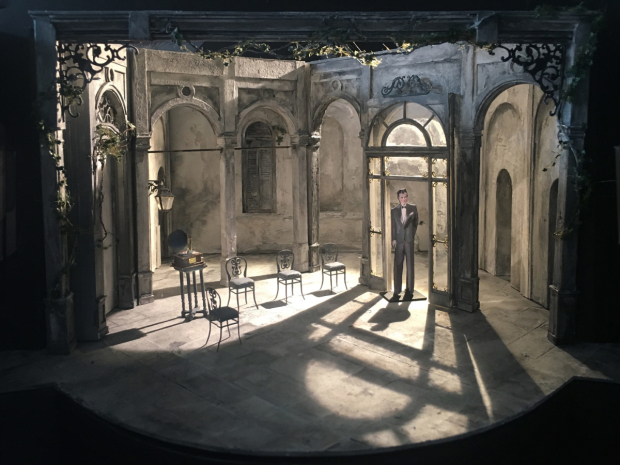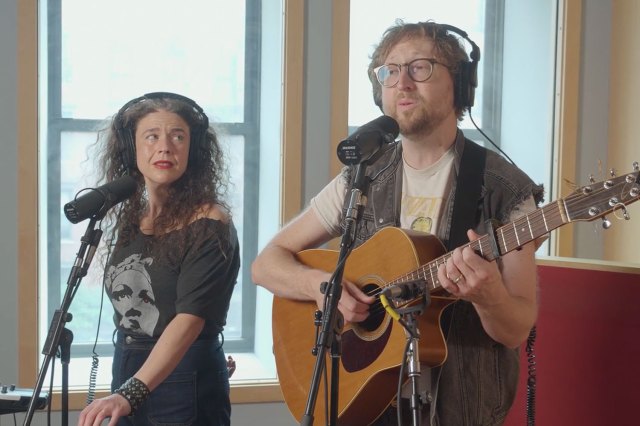Let's Talk About Sets: Morgan Large on Death Takes a Holiday
The designer of the upcoming revival of Maury Yeston’s supernatural musical explains how he approached Death’s journey in the world of the living
Alberto Casella wrote the metaphysical play La Morte in Vacanza in 1924 during the early days of fascism in northern Italy and just after the huge loss of life during World War I. The English translation and subsequent American film of 1934 were a huge success, so much so it has become a classic story following the 1998 Hollywood reincarnation as Meet Joe Black. With music and lyrics by Maury Yeston, and book by Peter Stone and Thomas Meehan, Death Takes a Holiday was first staged as a musical by the Roundabout Theatre, Off-Broadway in 2011.
I was thrilled to be asked by Thom Southerland to design this piece. I have long been a fan of his ability to present what on paper appear to be large-scale pieces, in intimate spaces, without an audience feeling short-changed. Thom’s approach actually enhances the audience experience by further challenging their imaginations – it’s a real skill.
The opening scene takes place during a car journey where the Vittorio family is travelling back from a trip to Venice following the engagement of the Duke’s daughter Grazia. She is thrown from the car, yet miraculously survives – thanks to the arrival of Death, who as Yeston explains, "can't take her because her potency of her life is so huge". Death decides to send her back to the real world without a scratch, but he begins to question why mortal souls fear him, dread him, and ultimately cling onto life for as long as possible. Death then takes on the physical form of a recently departed Russian Prince, Nikolai Sirki, and decides to spend a weekend as a guest of the Vittorio’s, in order to answer these questions which are basic to the human condition.

On approaching the design Thom and I went on a journey together to discover what we thought the essence of the story was, and how we would use that to create our visual language. It was the character of Death with his loveless longing and emotional emptiness, but a desire to for the first time to feel human emotion, that gave us our visual starting point.
Geographically, we are set in and around the grounds of the Villa Felicita on the banks of Lago Di Garda, northern Italy, the home of Duke Vittorio Lamberti, his family and staff. A variety of locations needed to be conveyed, including interiors of the villa, bedrooms, dining rooms, exterior garden scenes and a lakeside grotto. Yeston’s incredible soaring, almost operatic, score also offers clues into how the piece should be supported by design. We can hear the themes of the ethereal and otherworldly – we become aware which characters inhabit this world, and of those who are unaware of its proximity.
Beyond this I wanted to create a world of absence, quite literally an empty space which suggests the vacuum in which Death operates. From this initial idea, the rest of the design flowed. We carve up the space with moving pillars and arches, creating corridors and cortili – using the limitations of the small stage, that has no wing space, or flying capabilities, to our advantage.
Death Takes a Holiday opens at Charing Cross Theatre on 23 January and runs until 4 March, with previews from now.













